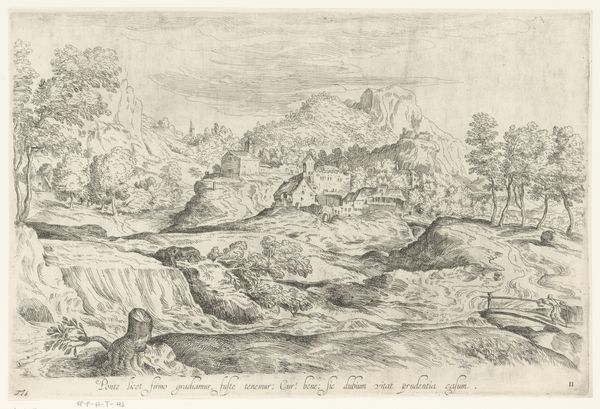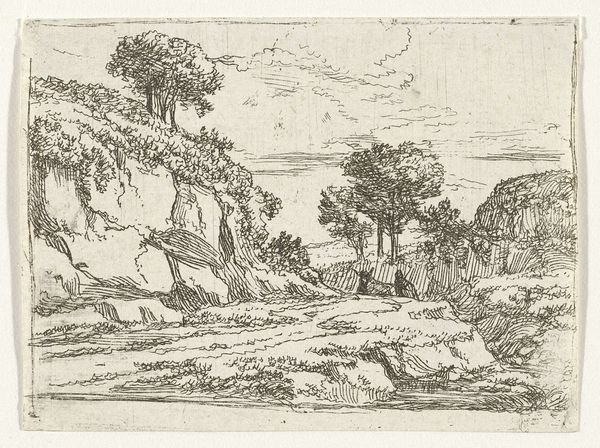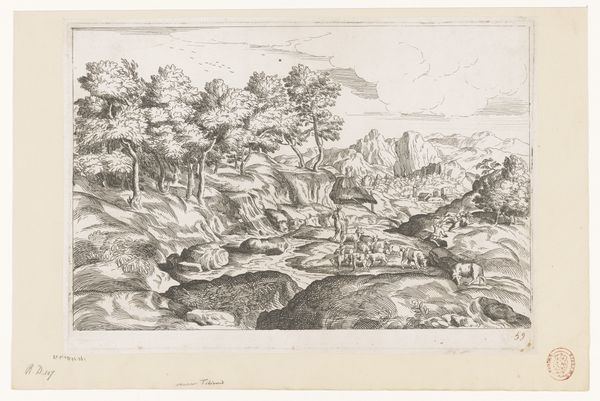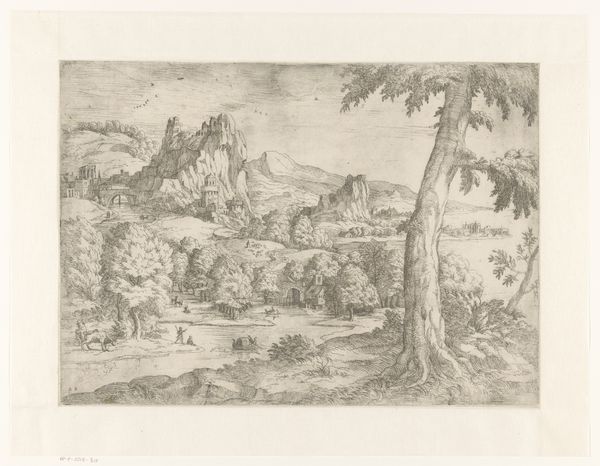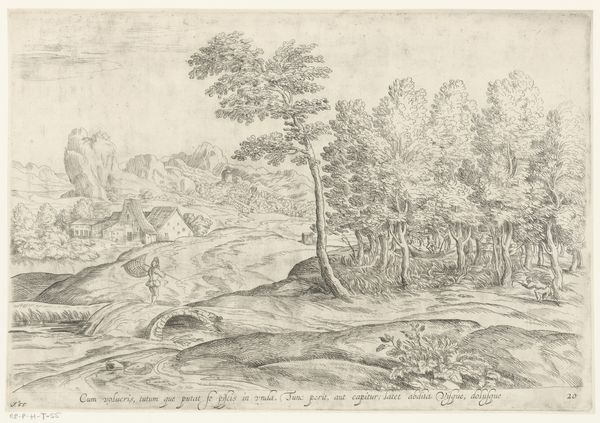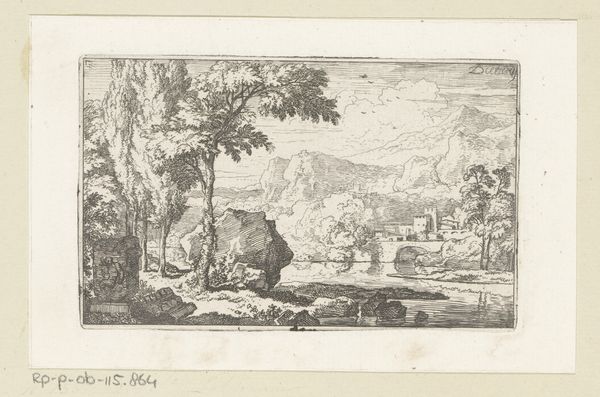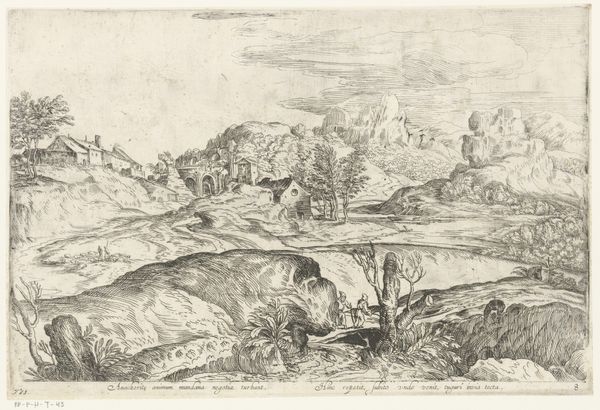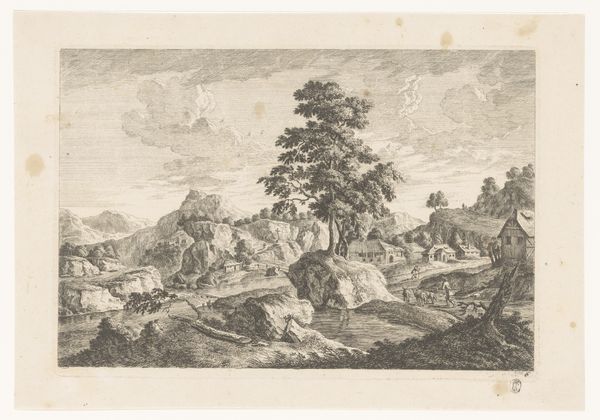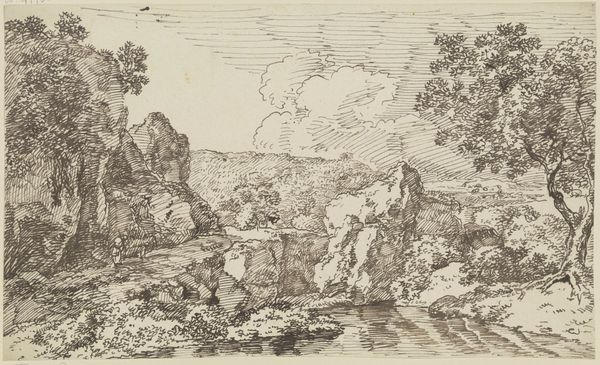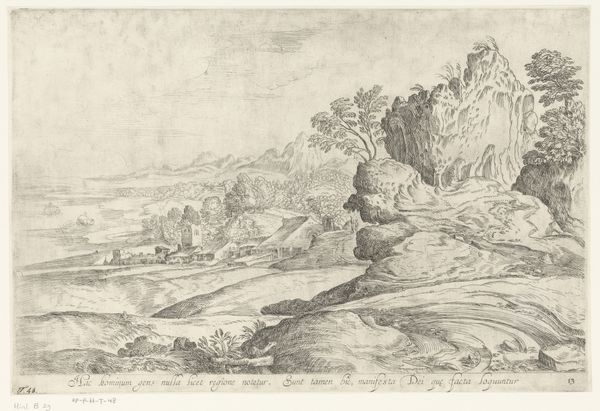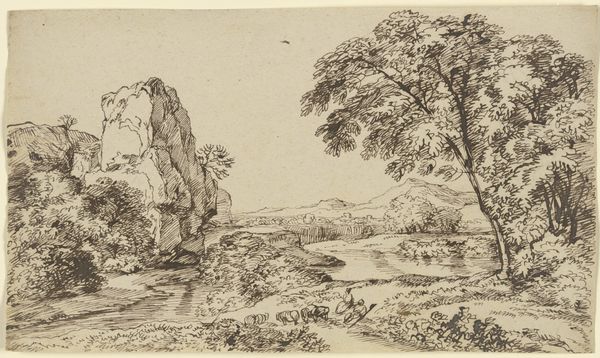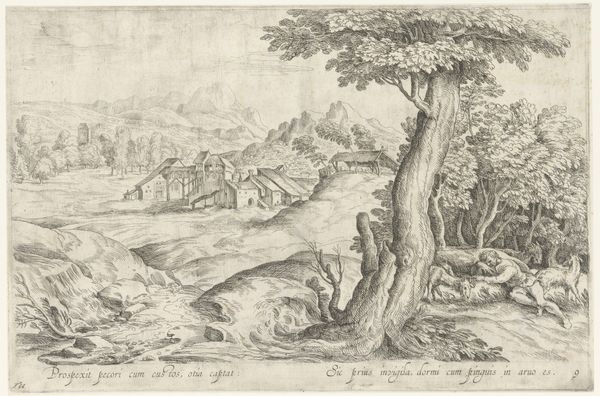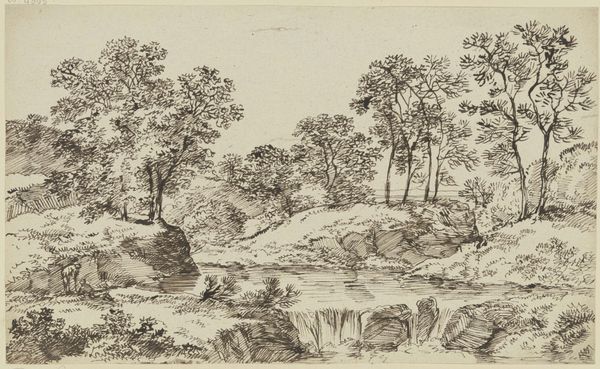
drawing, print, etching, paper
#
landscape illustration sketch
#
drawing
#
baroque
#
mechanical pen drawing
# print
#
pen illustration
#
pen sketch
#
etching
#
landscape
#
paper
#
personal sketchbook
#
sketchwork
#
pen-ink sketch
#
line
#
pen work
#
sketchbook drawing
#
genre-painting
#
storyboard and sketchbook work
Dimensions: height 233 mm, width 323 mm
Copyright: Rijks Museum: Open Domain
Curator: This delicate etching, currently housed in the Rijksmuseum, is entitled "Landschap met rivier en visser," or "Landscape with River and Fisherman," dating from around the 17th century, and created by an anonymous artist. Editor: It feels almost dreamlike. The precise lines render a world at once familiar and slightly removed, perhaps due to the scale of the landscape versus the small human figures. The light and shadow, so carefully etched, gives the scene a timeless quality. Curator: The rendering of the scene does align with the aesthetics that come into view in Baroque landscape etchings. It invites us to consider how the art of landscape printmaking was tied to cultural shifts in understanding humanity’s place in nature. We should remember the rise of landscape painting in the Netherlands coincides with growing economic power and the changing function of art for a rising merchant class. Editor: Absolutely. You can read that shift right into the details of the image—it shows a shepherd with their sheep, a figure at the river, and a village under the mountains in the distance. The focus isn't on grand historical events, but the day-to-day life in these territories, rendered with precision, celebrating local traditions. Curator: The anonymity of the artist also points to important socio-economic structures related to workshops during the early printmaking era. Printmaking involved multiple collaborators; so many works went unsigned, as signing every piece simply wasn’t feasible from a time perspective, with various individuals focused on different labor aspects of each image. It forces us to consider those uncredited laborers in the arts. Editor: Considering our present moment, it feels prescient. What stories remain untold by virtue of whose work we foreground? The dialogue that happens around identity, social class and labor remains very much central. Curator: I appreciate how you connect the historical context to current discourse. It's a crucial lens through which we should continue to examine art historical narratives. Editor: And to appreciate, through a careful etching, how similar the fundamental issues remain across the centuries.
Comments
No comments
Be the first to comment and join the conversation on the ultimate creative platform.
